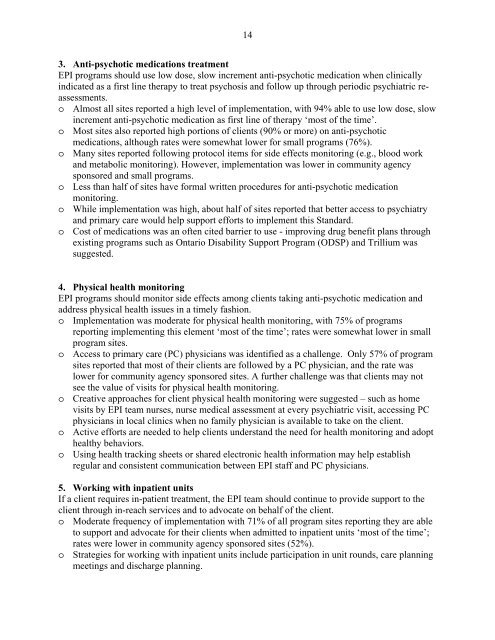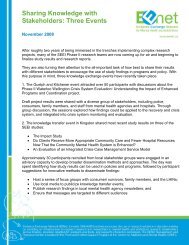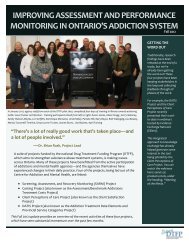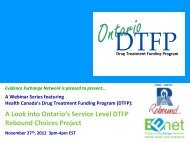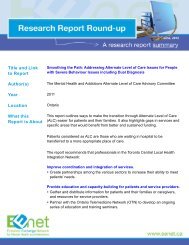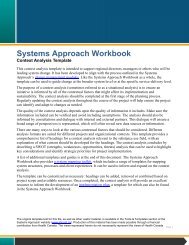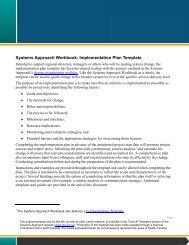Implementation of Early Psychosis Intervention Program ... - EENet
Implementation of Early Psychosis Intervention Program ... - EENet
Implementation of Early Psychosis Intervention Program ... - EENet
Create successful ePaper yourself
Turn your PDF publications into a flip-book with our unique Google optimized e-Paper software.
143. Anti-psychotic medications treatmentEPI programs should use low dose, slow increment anti-psychotic medication when clinicallyindicated as a first line therapy to treat psychosis and follow up through periodic psychiatric reassessments.o Almost all sites reported a high level <strong>of</strong> implementation, with 94% able to use low dose, slowincrement anti-psychotic medication as first line <strong>of</strong> therapy ‘most <strong>of</strong> the time’.o Most sites also reported high portions <strong>of</strong> clients (90% or more) on anti-psychoticmedications, although rates were somewhat lower for small programs (76%).o Many sites reported following protocol items for side effects monitoring (e.g., blood workand metabolic monitoring). However, implementation was lower in community agencysponsored and small programs.o Less than half <strong>of</strong> sites have formal written procedures for anti-psychotic medicationmonitoring.o While implementation was high, about half <strong>of</strong> sites reported that better access to psychiatryand primary care would help support efforts to implement this Standard.o Cost <strong>of</strong> medications was an <strong>of</strong>ten cited barrier to use - improving drug benefit plans throughexisting programs such as Ontario Disability Support <strong>Program</strong> (ODSP) and Trillium wassuggested.4. Physical health monitoringEPI programs should monitor side effects among clients taking anti-psychotic medication andaddress physical health issues in a timely fashion.o <strong>Implementation</strong> was moderate for physical health monitoring, with 75% <strong>of</strong> programsreporting implementing this element ‘most <strong>of</strong> the time’; rates were somewhat lower in smallprogram sites.o Access to primary care (PC) physicians was identified as a challenge. Only 57% <strong>of</strong> programsites reported that most <strong>of</strong> their clients are followed by a PC physician, and the rate waslower for community agency sponsored sites. A further challenge was that clients may notsee the value <strong>of</strong> visits for physical health monitoring.o Creative approaches for client physical health monitoring were suggested – such as homevisits by EPI team nurses, nurse medical assessment at every psychiatric visit, accessing PCphysicians in local clinics when no family physician is available to take on the client.o Active efforts are needed to help clients understand the need for health monitoring and adopthealthy behaviors.o Using health tracking sheets or shared electronic health information may help establishregular and consistent communication between EPI staff and PC physicians.5. Working with inpatient unitsIf a client requires in-patient treatment, the EPI team should continue to provide support to theclient through in-reach services and to advocate on behalf <strong>of</strong> the client.o Moderate frequency <strong>of</strong> implementation with 71% <strong>of</strong> all program sites reporting they are ableto support and advocate for their clients when admitted to inpatient units ‘most <strong>of</strong> the time’;rates were lower in community agency sponsored sites (52%).o Strategies for working with inpatient units include participation in unit rounds, care planningmeetings and discharge planning.


